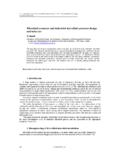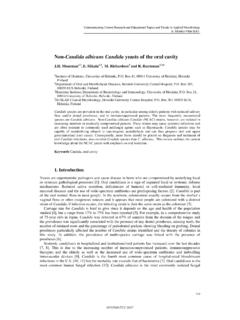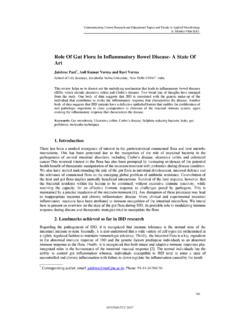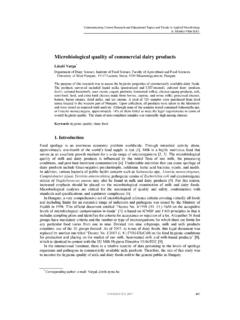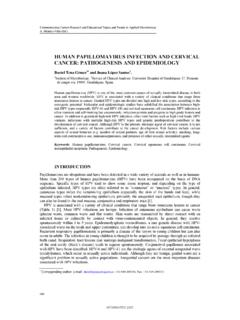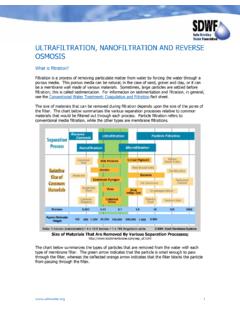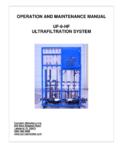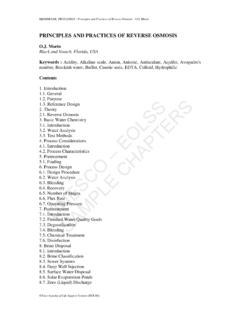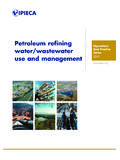Transcription of Simple and efficient method of bacterial polysaccharides ...
1 Communicating Current Research and Educational Topics and Trends in Applied Microbiology A. M ndez-Vilas (Ed.). _____. Simple and efficient method of bacterial polysaccharides purification for vaccines production using hydrolytic enzymes and tangential flow ultrafiltration Viviane Maimoni Gon alves1, Mickie Takagi1, Talita Souza Carmo1, Rodrigo Barbosa Lima1, Silvia Maria Ferreira Albani1, Juliano Ventura Pinto1, Teresa Cristina Zangirolami2, Roberto de Campos Giordano2 Martha Massako Tanizaki1 and Joaquin Cabrera-Crespo1*. 1. Laboratory of Bioprocesses, Center of Biotechnology, Instituto Butantan, Av. Vital Brasil 1500, S o Paulo CEP 05503-900 SP, BRAZIL. 2. Chemical Engineering Laboratory,Universidade Federal de S o Carlos, Via Washington Luiz, km 235, CEP 13565-905, S o Carlos, SP, BRAZIL. Neisseria meningitidis and Streptococcus pneumoniae are human pathogens and the main cause of their virulence are the capsular polysaccharides (CPS).
2 Purified CPS are used in the production of vaccines against these bacteria. Although there are several studies about the immunogenic characteristics of CPS. vaccines, the know-how of large scale production and purification is not available in the public domain, the publications are scarce and most of them are patents. In Brazil and in other countries, the vaccines are distributed by the Ministry of Public Health and the production cost of these vaccines must be as cheap as possible. The bacteria are cultivated in industrial bioreactors with appropriated controls. After growth, the CPS. are purified up to achieve the purity requirements, while maximizing the recovery and minimizing the production cost. A traditional purification process of bacterial CPS for vaccine production is based on several selective precipitations steps with solvents like ethanol and phenol, and cationic detergents. Separations of solid from liquid are based on continuous centrifugation in explosion proof installations.
3 The lipopolysaccharides, LPS, from Gram-negative bacteria, are separated by ultracentrifugation. Our laboratory has developed an improved general method for CPS purification from N. meningitides CPS-C and S. pneumoniae CPS-23F and CPS-6B that greatly reduces the number of ethanol precipitations and eliminates the phenol and the ultracentrifugation steps. The process consists of one ultrafiltration step using membranes with cut-off of 30 or 100 kDa, two steps of ethanol precipitation with 25-30% and 50- 80%, and elimination of residual proteins and nucleic acids by enzymatic digestion and diafiltration with 30 kDa or 100 kDa cut-off membranes. The LPS are separated by ultrafiltration in the presence of chelating agent and detergent. The purified CPS-C from N. meningitidis had a yield of 50% with 2% of protein and of nucleic acid related to total CPS. The final CPS from S. pneumoniae 23F had a recovery of 89%.
4 The final protein and nucleic acid impurities were and (w/w) respectively. The final CPS from S. pneumoniae 6B had a recovery of 72% and the protein and nucleic acid impurities were and (w/w) respectively. The purified CPS were free of proteolytic enzymatic activity and passed the quality tests of molecular mass and phosphate. Keywords polysaccharide vaccine; process purification; tangential flow ultrafiltration; enzymatic hydrolysis. N. meningitidis [1] and S. pneumonia [2] are some of the most common agents of meningitis, pneumonia and bacteremia in infants and immunodeficient adults [3]. The capsular polysaccharides (CPS) act as mechanisms of defense against the immune system of the hosts which makes them the main factor of virulence of these bacteria. Vaccines based on polysaccharides are effective for the adult population. *. Corresponding author: e-mail: Phone: +55 +11 +3726-7222 , Fax: +55+11+37261505.
5 450 FORMATEX 2007. Communicating Current Research and Educational Topics and Trends in Applied Microbiology A. M ndez-Vilas (Ed.). _____. polysaccharides are polymers of high molecular mass of repetitive sugar units joint by glycosidic linkage. N. meningitidis serogroup C polysaccharide is a homopolymer of -(2-9)-N-acetyl neuraminic acid [4]. The pathogenic S. pneumoniae includes 90 different types of polysaccharides among which there are 23 that compose the 23-multivalent vaccine. The polysaccharide 23F is a repeating tetrasaccharide unit containing -D-glucose(1-4)- -D-galactose+[ -L-rhamnose(1-2)]+[phosphate- glycerol] (1-4)- -L-rhamnose(1-4) [5]. The polysaccharide 6B is a repeating tetrasaccharide unit of - D-galactopyranosyl(1-3) -D-glucopyranosyl(1-3) -D-rhamnopyranosyl(1-4)D-ribitol-5-phosp hate [6]. There are several studies about the immunogenic characteristics of polysaccharide vaccines. However, publications are scarce and the know-how on large scale production and purification is not in the public domain [7-11].
6 The purification process aims to obtain the product with the desired specification while maximizing yield and minimizing process cost [12]. To achieve this goal, differences between physical chemical properties of the product of interest and that of the impurities or contaminants are explored. In general, it is necessary more than one step, each one using different physical chemical properties, to obtain a pure product. The most explored properties are molecular size, electrical charge, hydrophilicity, hydrophobicity, solubility/insolubility in solvents, thermoresistance. The final process is a series of purification steps where there is a trade-off between losses of contaminants, as much as possible, with loss of product, as little as possible. The contaminants in the purification of CPS are proteins, nucleic acids, pigments and other polysaccharides , cell wall polysaccharides or lipopolysaccharides (LPS).
7 Purification of CPS follows a general method of concentration/purification by ethanol and/or anionic detergent selective precipitation, protein extraction by phenol and, for Gram-negative bacteria, by ultracentrifugation to eliminate the LPS [7-10]. The traditional purification process of polysaccharides from N. meningitidis consists of precipitation with cationic detergent hexadeciltrimetilamonium (cetavlon). The cetavlon precipitate is resuspended in 1 M CaCl2, two precipitations with ethanol, desproteinization by three extraction steps with phenol, dialysis and further ethanol precipitation. The LPS are separated from the CPS by ultracentrifugation [9, 10]. S. pneumoniae CPS traditional purification process consists of total cell lyses with detergent deoxycholate, concentration/diafiltration, four steps of ethanol precipitation, desproteinization by phenol treatment and activated charcoal [7, 8]. Our laboratory has developed an improved method for purification of vaccine polysaccharides from N.
8 Meningitidis C [13], S. pneumoniae 23F [14] and S. pneumoniae 6B, which largely reduces the number of ethanol precipitations replacing them by ultrafiltration, the phenol desproteinization was replaced by enzymatic treatment and the ultracentrifugation was substituted by ultrafiltration in the presence of chelating agent and detergent. 2. Material and methods Analytical procedures CPS concentration from N. meningitidis C was measured by the resorcinol method [15]. The CPS from S. pneumoniae 23F and 6B were measured by a specific method for methyl pentoses using rhamnose as a standard [16, 17]. Protein was determined by the method of Lowry et al. [18]. Nucleic acids (NA) were estimated at 260. nm and the amount was calculated assuming an absorbance of A= 50 g [10]. Bacteria strains FORMATEX 2007 451. Communicating Current Research and Educational Topics and Trends in Applied Microbiology A. M ndez-Vilas (Ed.)
9 _____. N. meningitidis serogroup C and S. pneumoniae serotype 23F strain St 9995 and serotype 6B strain ST433/03 are clinically isolated and stored in the Instituto Adolfo Lutz, Sec. de Bacteriologia, SP, Brazil. Cultivation The culture was conducted in a 5~10-L fermentor Bioflo 2000 (New Brunswick Scientific Co.). containing the appropriate medium and conditions described in [19-21]. The whole broth of the bioreactor, Neisseria and medium broth, was precipitated with cetavlon, decanted and centrifuged. Cetavlon precipitated was selectively solubilized with 1 M CaCl2 and precipitated by two cuts of ethanol: one with 25% and another with 80%. The 80% ethanol precipitated 10 L 9L. Pin Fig. 1 Scheme of Tangential Flow Microfiltration/Ultrafiltration. Pin =pressure inlet; Pout =pressure outlet. Transmembrane pressure - TMP= (Pin+Pout)/2). was ressuspended in water, water soluble-CPS-C fraction [9, 10].
10 The Streptococcus cells were separated from the culture broth by tangential microfiltration m, m2, with transmembrane pressure (TMP) of 10 psi (Cassette type Millipore, Bedford, MA, USA) [14, 22]. A peristaltic pump was used to drive the cellular suspension through the membrane (Masterflex, Easy-load I/P model 77601-10, silicone tubing Masterfex 96400-26). The cell-free microfiltrate was used for CPS-23F and CPS-6B purification, Figure 1 and 2. In the Tangential Flow Micro/Ultra filtration, as shown in Figure 1, the feed stream runs tangential to the membrane and the particles and molecules that are bigger than the pore are kept in constants movement, this procedure avoids the formation of a filtration cake and the filtration process can run fast and for long period of time. [23]. Concentration/Diafiltration The cell-free CPS-23F or CPS-6B was concentrated to 1/10~1/20 by tangential flow ultrafiltration, TFUF, membranes of 30 or 100 kDa (Prep-Scale spiral type Millipore, peristaltic pump Masterflex, Easy-load I/P model 77601-10, silicone tubing Masterfex 96400-26).
